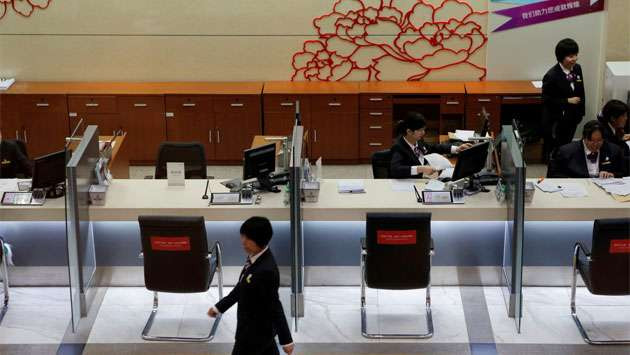
As China's economic growth slows and its financial system shows signs of strain, the country's banking sector emerges as a potential flashpoint that could threaten not only domestic stability but also global economic health. Recent developments reveal a troubling picture of mismanagement, hidden risks, and regulatory inadequacies that cast doubt on the resilience of the world's second-largest economy.
At the heart of China's banking woes lies a vast network of small, rural banks that have long operated in the shadows of their larger, state-owned counterparts. With approximately 3,800 such institutions spread across rural China, these banks collectively hold 55 trillion yuan ($7.5 trillion) in assets, comprising 13% of the country's total banking system. However, far from being a pillar of strength, this segment has become a ticking time bomb.
Years of mismanagement and aggressive lending practices have burdened many of these small banks with substantial amounts of bad loans, reminiscent of the American savings and loan (S&L) crisis of the 1980s. Some banks now report that an alarming 40% of their loan portfolios consist of non-performing loans, largely due to risky lending to real estate developers and local governments amidst China's overheated property market downturn.
China's regulators, criticized for lax oversight, are now hurriedly pursuing consolidation as a strategy to contain the fallout. This approach, forcing weaker banks to merge with stronger ones, aims to create larger, ostensibly more stable institutions. In a striking move, 40 Chinese banks disappeared in a single week in June as part of this consolidation effort—outpacing the pace of S&L crisis bank failures.
Critics, however, argue that this consolidation merely masks underlying issues, creating "bigger, badder banks" without addressing root causes. Unlike the US during the S&L crisis, China lacks a robust legal framework for resolving failed banks, exemplified by the repeatedly postponed Financial Stability Law.
Moreover, China's economic model, reliant on state-directed investment and debt-fueled growth, has led to significant structural imbalances. Local governments, burdened by massive debts, are now expected to rescue troubled banks through special-purpose bond issuance, perpetuating a cycle of debt.
The banking sector's challenges in China highlight deeper structural issues within its economy. Years of state-directed investment and reliance on debt-driven growth have led to significant imbalances. Now, local governments burdened with massive debts are being tasked with bailing out troubled banks through special-purpose bonds. This circular flow of debt raises serious questions about the sustainability of China's economic model.
Compounding these concerns is the weakening state of China's currency, the yuan, which has depreciated more than 10% against the dollar since the Federal Reserve began raising interest rates in March 2022. This decline puts the People's Bank of China (PBOC) in a difficult position, torn between supporting economic growth through monetary easing and maintaining currency stability.
- The brains behind Matavire’s immortalisation
- Red Cross work remembered
- All set for inaugural job fair
- Community trailblazers: Dr Guramatunhu: A hard-driving achiever yearning for better Zim
Keep Reading
Recent interventions by the PBOC in short-term and long-term debt markets signal a prioritization of currency stability over immediate growth. While this strategy may bolster the yuan in the short term, it risks further dampening an already sluggish economy. The central bank's reluctance to reduce interest rates, despite clear signs of economic distress, underscores the challenges facing Chinese policymakers.
President Xi Jinping's ambition for China as a "financial power" with a "strong currency" and a "strong central bank" increasingly contrasts with economic realities. The government's interventions in financial markets and reluctance to allow insolvent institutions to fail suggest a deep-seated fear of market forces and a preference for stability at all costs.
The global implications of a banking crisis in China are significant due to the interconnectedness of the global financial system. The opacity of China's financial system and unreliable official data compound these concerns, leaving international investors and policymakers uncertain about the true risks. China's banking sector serves as a stark reminder of the risks associated with rapid, debt-fueled growth and lax regulation.
While the ongoing consolidation of small banks may prevent immediate crises, it fails to address fundamental issues such as poor risk management, excessive leverage, and misaligned incentives. As China's economic momentum slows, the vulnerability of its financial institutions becomes increasingly evident.
In the coming months and years, China's ability to navigate these financial waters without catastrophe will be crucial. However, without transparent reforms addressing systemic weaknesses, the country's banking sector may continue to pose risks to both its own stability and global economic health.







